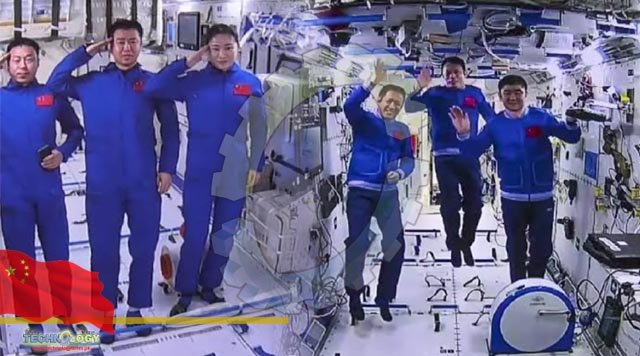The three Shenzhou-14 Chinese astronauts, or taikonauts, have spent two months in orbit since they were sent to the country’s space station on June 5.

what has China’s Shenzhou-14 crew done? The crew members, tasked with the most complicated and challenging mission during the construction phase of China’s space station so far, have been carrying out various types of work in an orderly manner during the first two months of their six-month trip, and are in good physical condition, according to the Astronaut Center of China. the team witnessed the rendezvous and docking of the Wentian lab module with the Tianhe core module in orbit. It is the first time that China’s two 20-tonne-level spacecraft conducted a rendezvous and docking operation in orbit, and also the first time that space rendezvous and docking were carried out during the taikonauts’ in-orbit stay in the space station. The Wentian lab module has the same astronaut living facilities as the Tianhe core module, including three sleeping areas, a toilet and a kitchen – all waiting to be set up by the Shenzhou-14 crew.
Since the arrival of the Wentian, the trio has been busy setting up the living environment in the new module. They are close to completing the installation and testing of the equipment for the regenerative life support system, which will regenerate vital resources such as oxygen and water in outer space, according to the Astronaut Center of China. With the efforts by the team, now the lab module is almost ready for the taikonauts to live in, and one of the crew members Cai Xuzhe has been sleeping in the new bedroom for a period of time to test its functions. In addition, they have been installing and testing the scientific experiment cabinets in the Wentian lab module. The team has also tested the operation of the small robotic arm on board the Wentian lab module, which is nearly six meters long and can manipulate payloads of up to three tonnes.
China’s Shenzhou-14 , With the support from the ground team, the taikonauts have completed a series of tests of the small robotic arm, including the status of its various components, the deployment of its each joint, as well as its crawling ability on the surface of the space station. Before the arrival of the small robotic arm, there was already a larger one working at the space station. It’s installed on the core module and has completed tasks such as transferring and docking spacecraft and assisting the taikonauts’ extravehicular activities (EVAs). The larger one, 10.2 meters long, can reach and fetch objects up to 25 tonnes. The small robotic arm provides the larger one with more possibilities. They can be connected to form a massive robotic arm that measures about 15 meters in length. This combination can cover a wider range of EVAs, transfer for a wider area range and reach different positions for more precise operations. During EVAs, one of the crew members will stay inside the cabin to manipulate the robotic arm to assist the spacewalk of the other two members who venture outside the cabin.
Source: This new is originally published by Cgtn